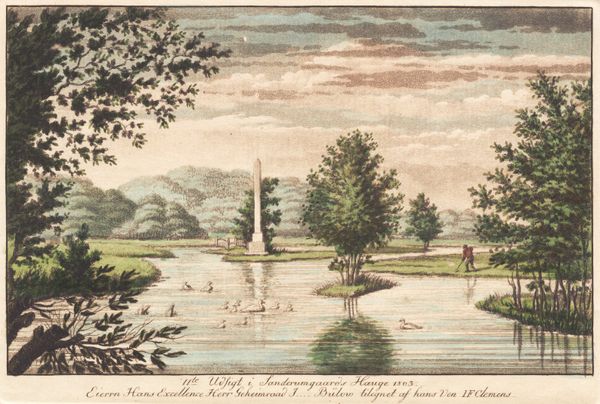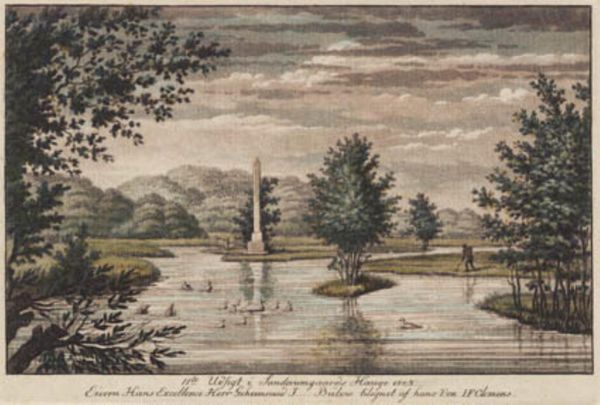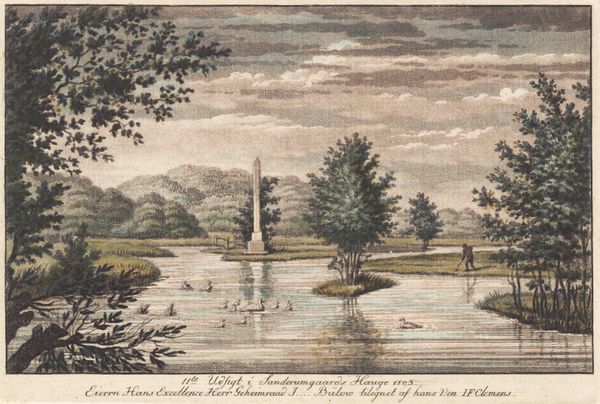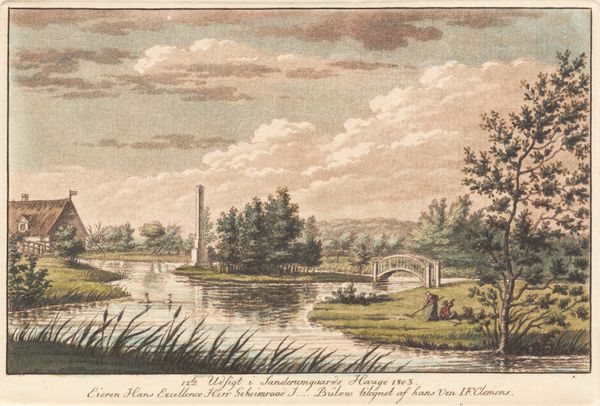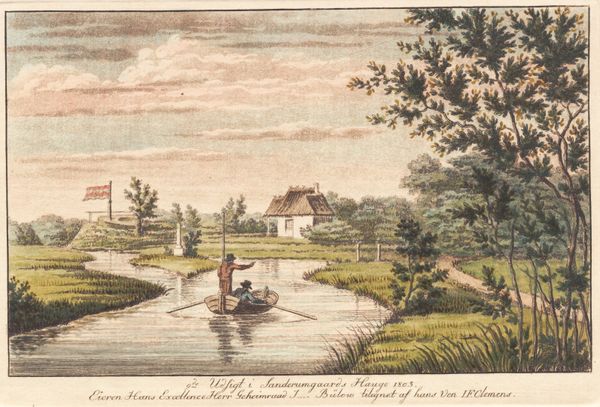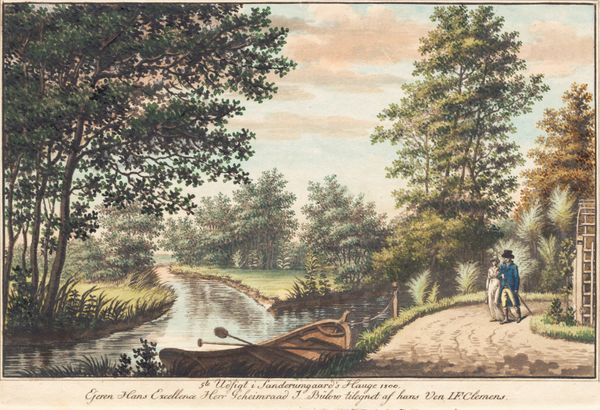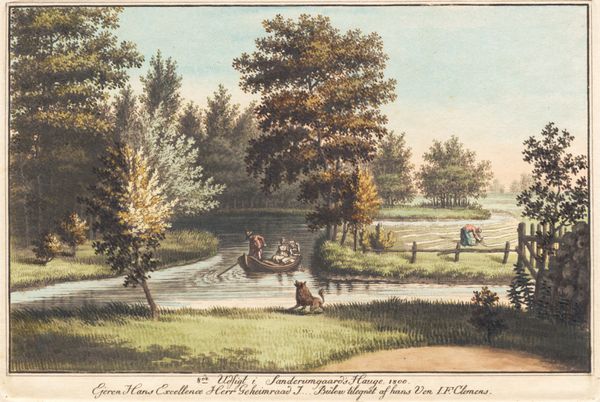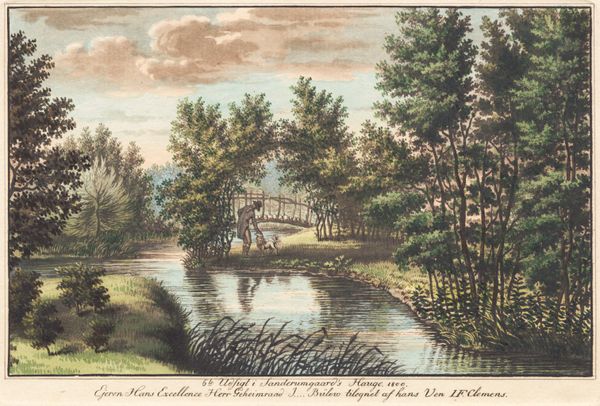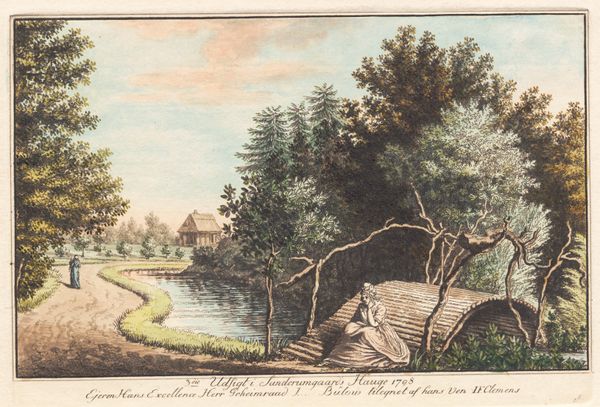
aquatint, drawing, print, etching
#
aquatint
#
drawing
#
neoclassicism
# print
#
etching
#
landscape
#
coloured pencil
Dimensions: 164 mm (height) x 220 mm (width) (bladmaal), 114 mm (height) x 170 mm (width) (plademaal), 103 mm (height) x 164 mm (width) (billedmaal)
Curator: Look at this print; "Sanderumgaards have 11" created around 1803 by J.F. Clemens. It uses aquatint and etching, creating a soft, almost dreamlike image. Editor: Yes, my initial impression is one of serene formality. The muted palette adds a touch of melancholy despite the pleasing composition of the landscape. I wonder about the availability of those pigments and the methods used for even color distribution in such early prints. Curator: The obelisk immediately strikes me. Obelisks often represent power, remembrance, a connection to ancient knowledge. Here, it monumentalizes the owner's control over the natural world. Editor: And that neatly trimmed lawn! Think of the labor required to maintain that visual aesthetic! It screams of landed gentry and leisure fueled by resources. Did Clemens consider these implications, or was he merely fulfilling a commission? Curator: Possibly both? He provides an idealized version. Notice the placement of that lone figure with what looks like a fishing pole: an archetype of man at one with nature, even if the reality was much harsher for many. Clemens employs symbolism that speaks of the Enlightenment ideal – reason and nature harmoniously intertwined. Editor: But even the paper and the printing process itself imply a level of technological sophistication and the availability of raw materials extracted, often at a cost, from other regions. I'm fascinated by how seemingly "natural" landscapes are inherently intertwined with production, colonialism and class divisions. Curator: Very true! Though created through reproducible media such as etching and aquatint, it’s a far cry from mass production. The drawing implies access to materials, technical mastery, but not widespread dissemination, remaining within a circle of privilege and status. Editor: A view then, quite literally framed and defined by social structures! Curator: Exactly. Analyzing the symbols can guide us to meanings and messages beyond the pleasing imagery. Editor: And recognizing the materials and labour reminds us that even depictions of nature carry the weight of social history.
Comments
No comments
Be the first to comment and join the conversation on the ultimate creative platform.
